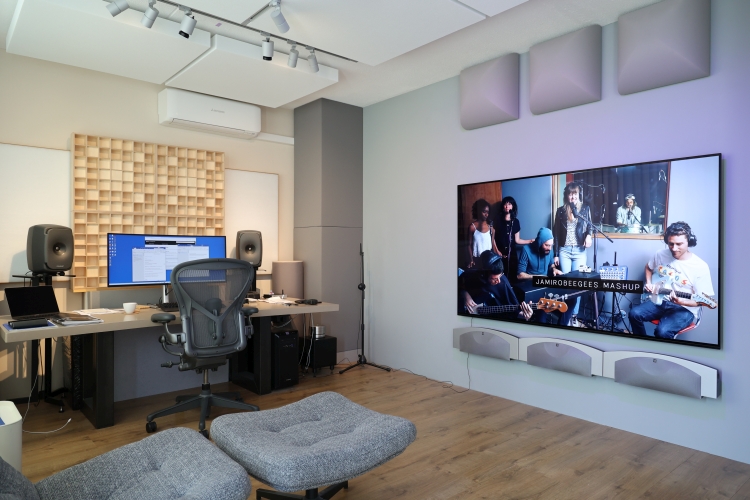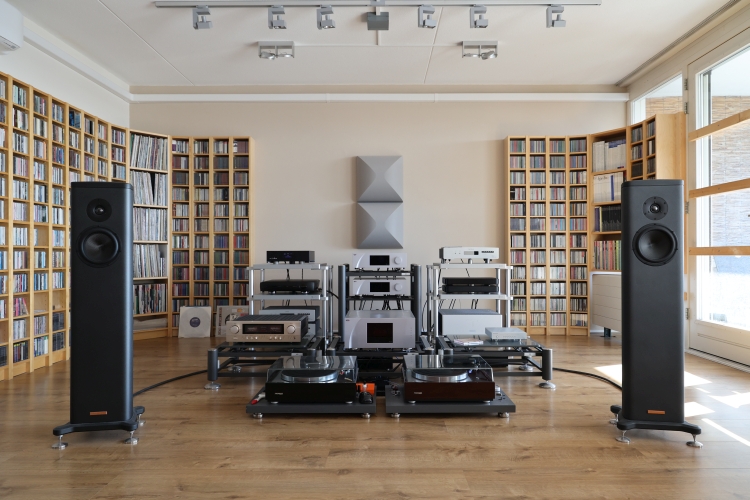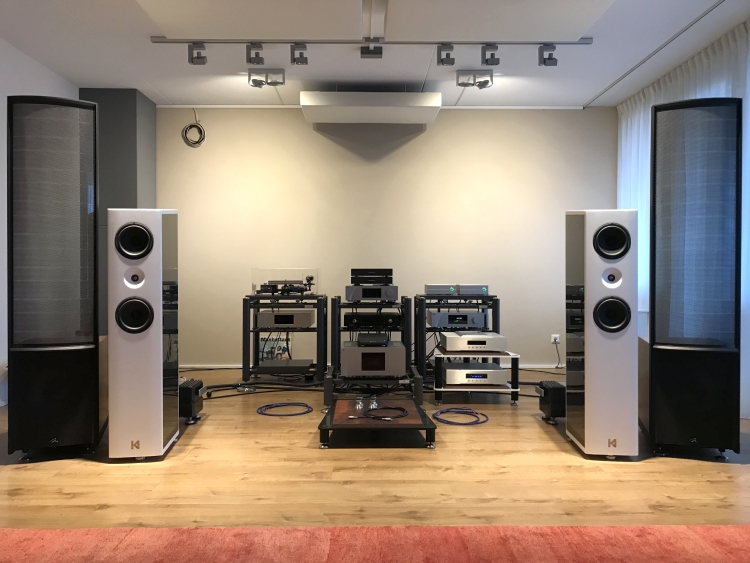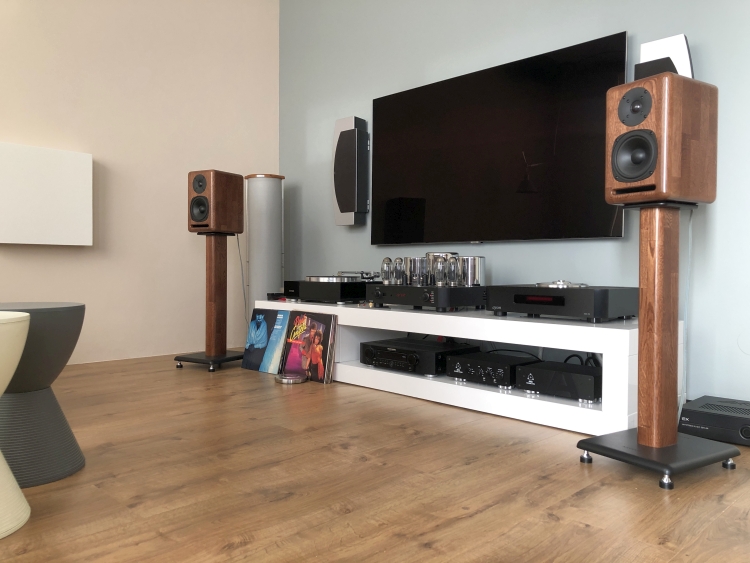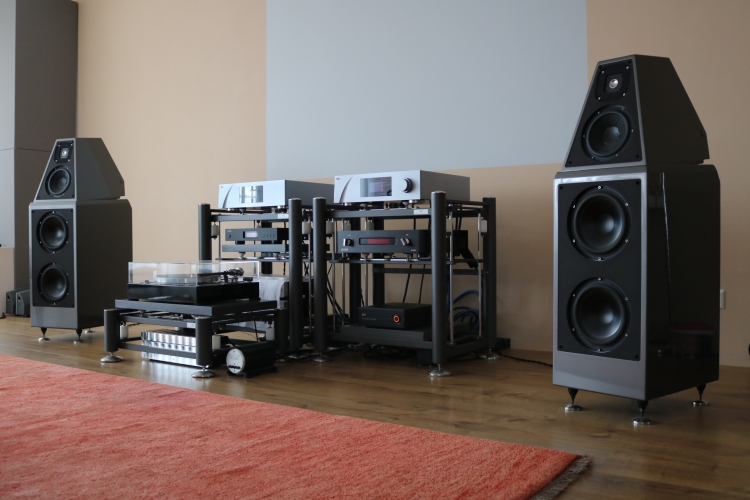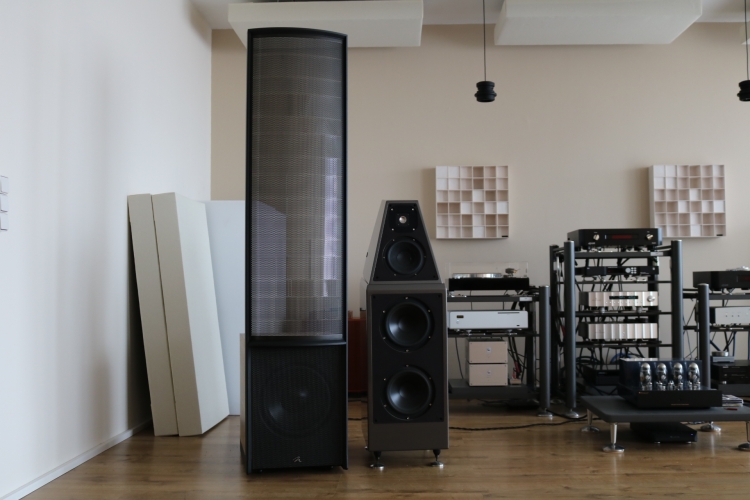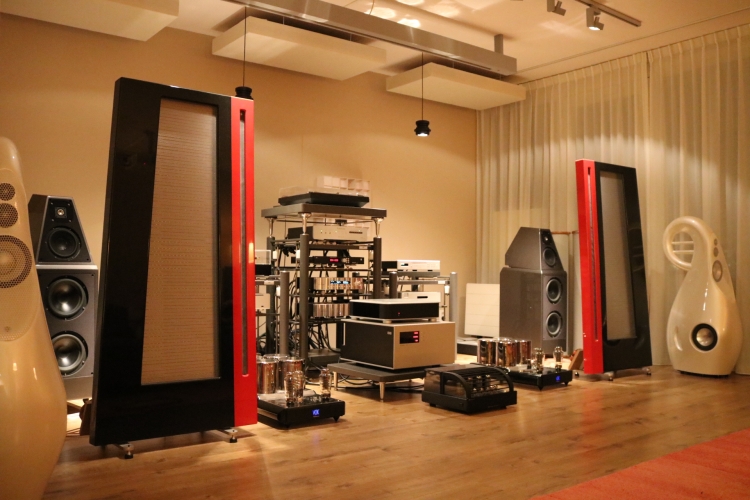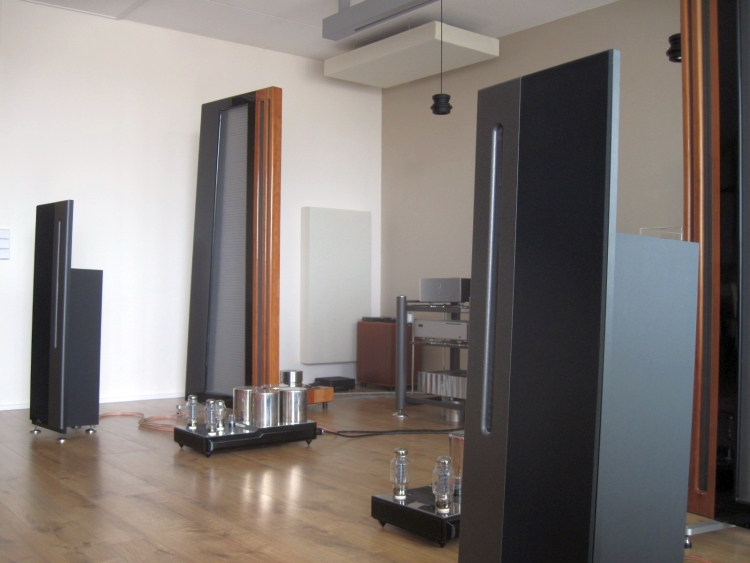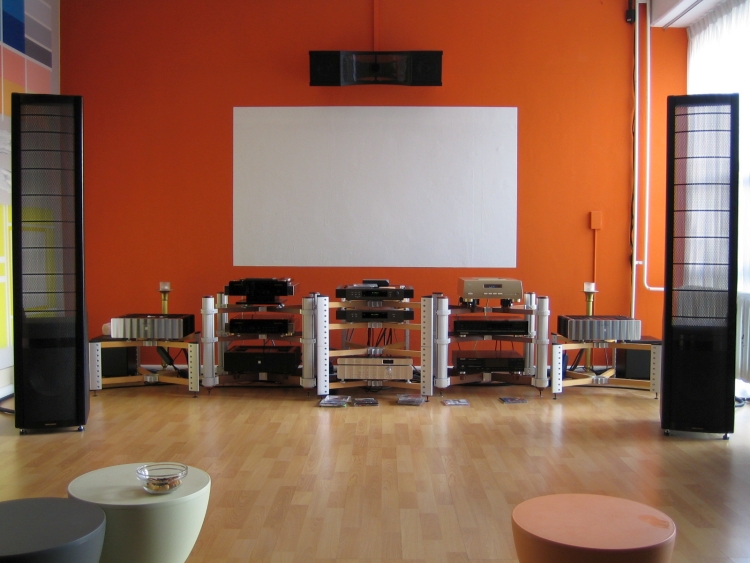
The main picture above shows the complete setup as it was on december 2008. Individual component changes aside, the setup ‘s main components remained unchanged until 2009 and many reviews were written using this system.
From left to right: Martin Logan SL3 hybride electrostatic speakers, Rel Quake II subwoofers mostly for surround, Jeff Rowland model 6 mono poweramps, Audiomeca Mephisto II cd transport, Audiomeca Enkianthus DA converter, Jeff Rowland model 2 poweramp for the center speaker, DCS Delius/Purcell dac and upsampler, Jeff Rowland synergy preamp, CEC TL1x belt-driven CD transport, Marantz CD94MKII cd player, Philips CD880 cd player en Martin Logan Stage hybrid electrostatic centerspeaker.
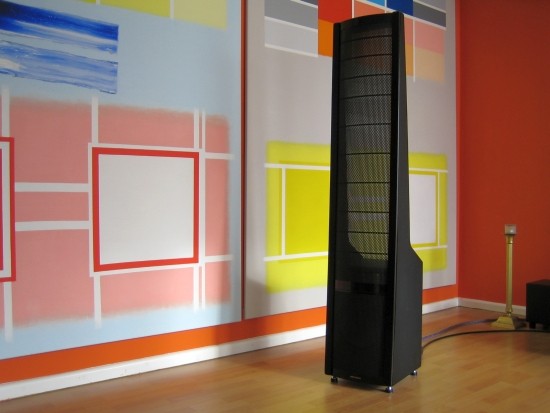
Martin Logan SL3 electrostatic speaker. The transparent foil produces the sound from the midbass and up and a closed-cabinet woofer produces the deep bass.
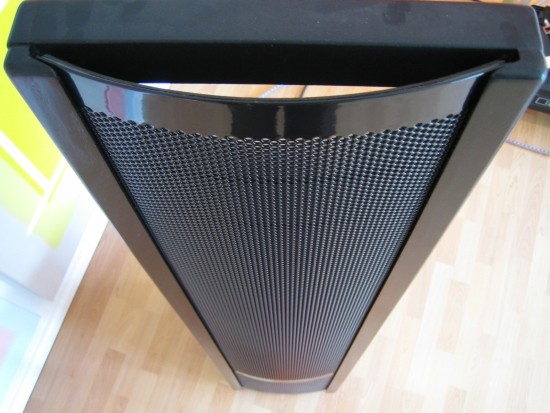
Martin Logan SL3 electrostat in closeup. On this photo you can see its construction very clearly: two perforated steel plates and plastic foil inbetween. The foil produces the sound.
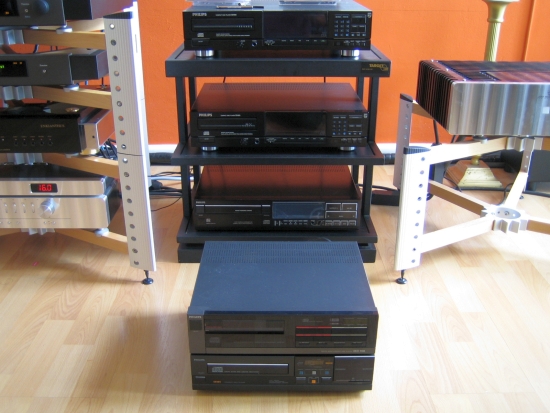
Via my friend Wouter I came into contact with classic Philips and Marantz CD players. They definitely had a certain flair: always liquid and smooth, in some way reminiscent of analog… and what’s more: these transports turned out to match very well with the dCS DAC. Especially the Philips CD880 (CDM-1) was a great transport that was very difficult to beat, until the CD94 came along, which had a fuller, more sonorous sound as a transport while retaining speed and dynamics. They both have a CDM-1 mechanism and both are technically in very good condition (not one having large amounts of jitter or something) so I don’t know where the difference comes from.
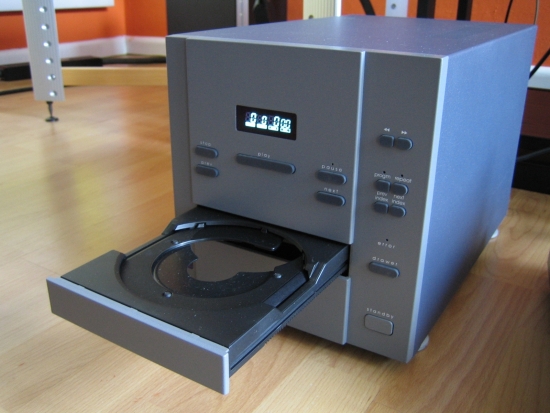
This has got to be the strangest CD transport ever. The brand is Proceed, a brand of Madrigal, the parent company that also produces Mark Levinson products. Its sound is very much branded by the transport used, an old Philips swing arm mechanism, either CDM1 or CDM-4. It sounds like a Marantz CD94 used as a transport, but slightly tighter and a bit more analytical, which seems to indicate that Proceed used better electronics that yield tighter results than Marantz. In my setup however I favoured the slightly more relaxed sound of the Marantz.
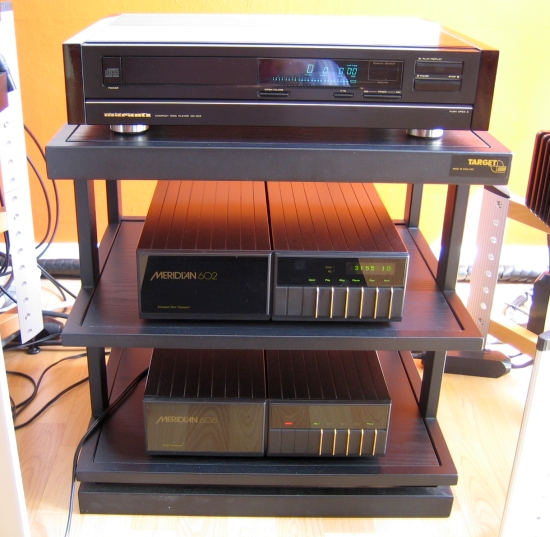
The Philips and Marantz tests continued for some time. I tried almost every swing-arm cd mechanism that ever existed, including the Marant CD94MKII and the beautiful Meridian 602. The Marantz CD94 MKII was the king of the bunch. This particular sample was practically unused when I bought it. It was in new-like condition and sounded great and I still regret selling it. The Meridian 602-606 combo below it has a great reputation but I think this sample’s electronics were off spec as it sounded very restrained: the Marantz CD94MKII easily bettered it in all aspects.
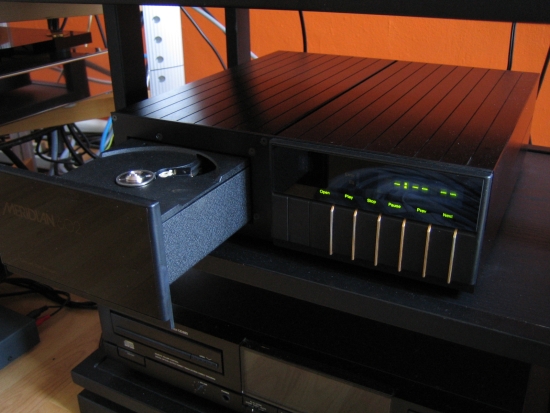
The experiences with these players led to the CEC TL-1x belt-driven CD player.
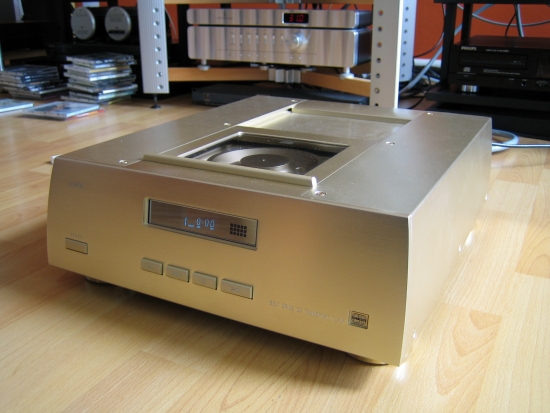
Via all the Philipses, Marantzes, the Audiomeca and Proceed transport I arrived at the CEC TL1x. This has got to be one of the finest CD transports available. It gave me the Classic Philips fluidity but also speed and dynamics as well as timbral richness. I felt that the DCS dacs combined with the CEC never sounded more analog. I only sold the CEC because I found out that an integrated CD player inherently sounds better than a separate transport and DAC due to the obligatory SPDIF connection between them.
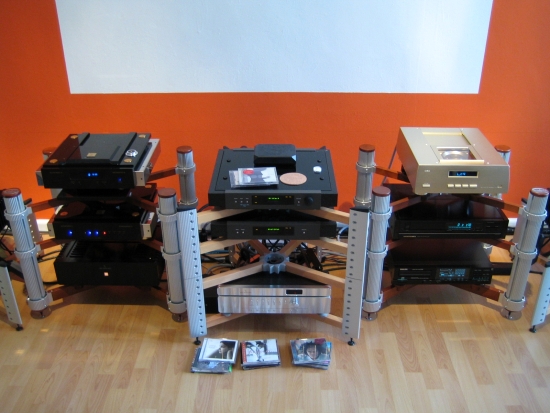
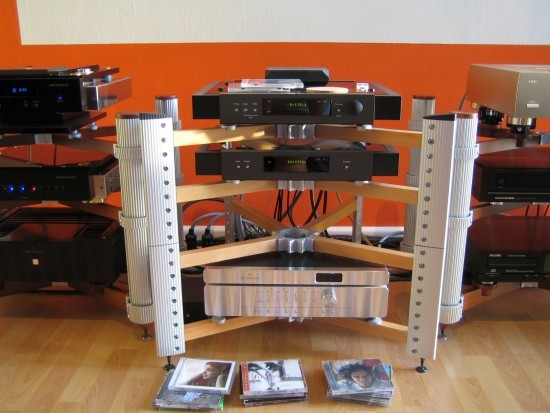
Above: The DCS Delius and Purcell are genuine reference components, excelling in resolution and finesse. The empty spot beneath would house an upcoming digital lens but this was ultimately postponed until PS audio would bring out their new and improved version of it.
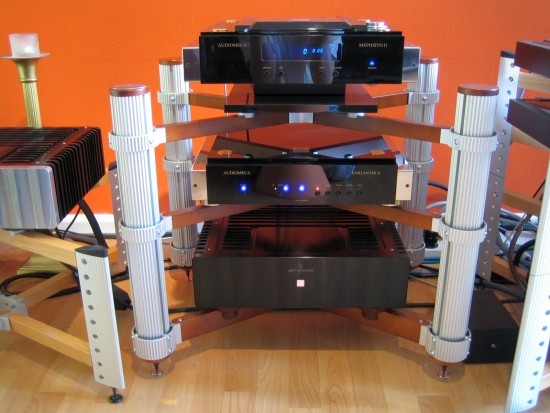
Above: Audiomeca setup on Solid Tech Rack of Silence. And believe it or not: the rack is more important than you might think. It does a lot for the sound. The Audiomeca components are made from stainless chromed steel and black perspex. This last material is very expensive and difficult to aquire and difficult to work with. That’s why you don’t see this material a lot anymore. Dutch producer Sphinx quit using it for the same reasons. Too bad since it really looks very classy.
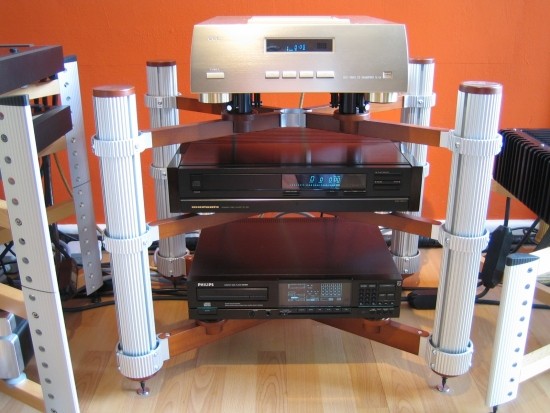
Above: this may be the most important link in the chain: the CEC TL 1x Belt-driven cd transport.
Not only disc rotation is done via rubber belt but also the movement of the lensassembly. It doesn’t stop there because the transport has more tricks up its sleeve: for example gyrostabilisation using a contraweight at the bottom of the rotating axe. All the steps taken result in a very big sound that’s fluid and refined and actually sounds somewhat like analogue lp playback.
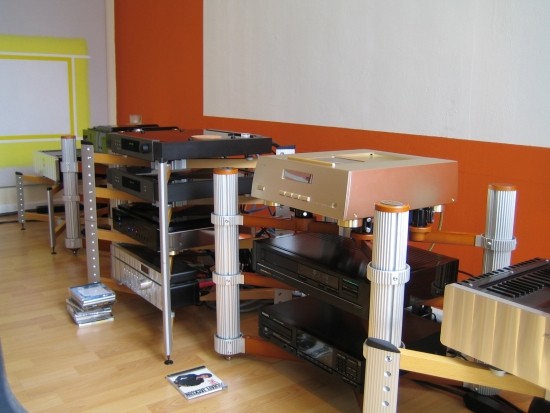
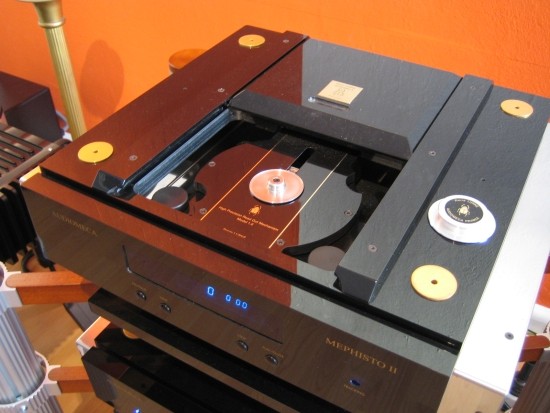
Very special and unique transport designed by Pierre Lurne in cooperation with Rene Boonen (designer of the famous Philips CDM4 transport). Lots of attention has been paid to both hard coupling of parts for quick energyflow and damping to prevent ringing. It has to be seen in the flesh to be appreciated. The spindle is extra large: in fact it has been made larger than the maximum diameter specified in the red book. They just experimented making it larger and larger, until the TOC couldn’t be read anymore, then went back a little. The actual size is now a fraction smaller than is needed to be able to read this part of the disc. The large diameter helps a lot to make the disc more stable during rotation.
The resulting sound is well-detailed, quick, snappy and airy. But not over analytical, sharp of grainy. Strangely enough this transport matched really well with the Enkianthus dac from the same maker but failed to shine in combination with the DCS combo, where it sounded restrained and flat. Almost like it was badly adjusted and had too much jitter and while the Audiomeca DAC apparently handled this well, the DCS combo did not. But this is just guessing and I don’t know the reason. Perhaps it’s also about system synergy.
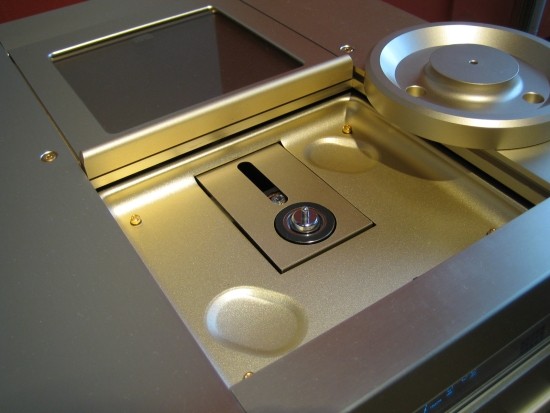
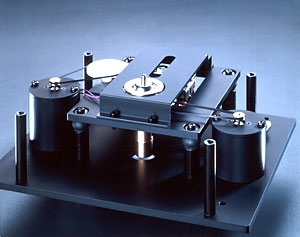
The CEC TL1-x belt driven transport with its latch open. (Extensive Review) Visible to the side is the big and heavy puck that has to be placed over the CD. As can be seen on the photo, the spindle is different from regular spindles in that it has a springy middle part that compresses when the puck is laid over the CD. The stock-photo below shows how the transport is built on the inside.
